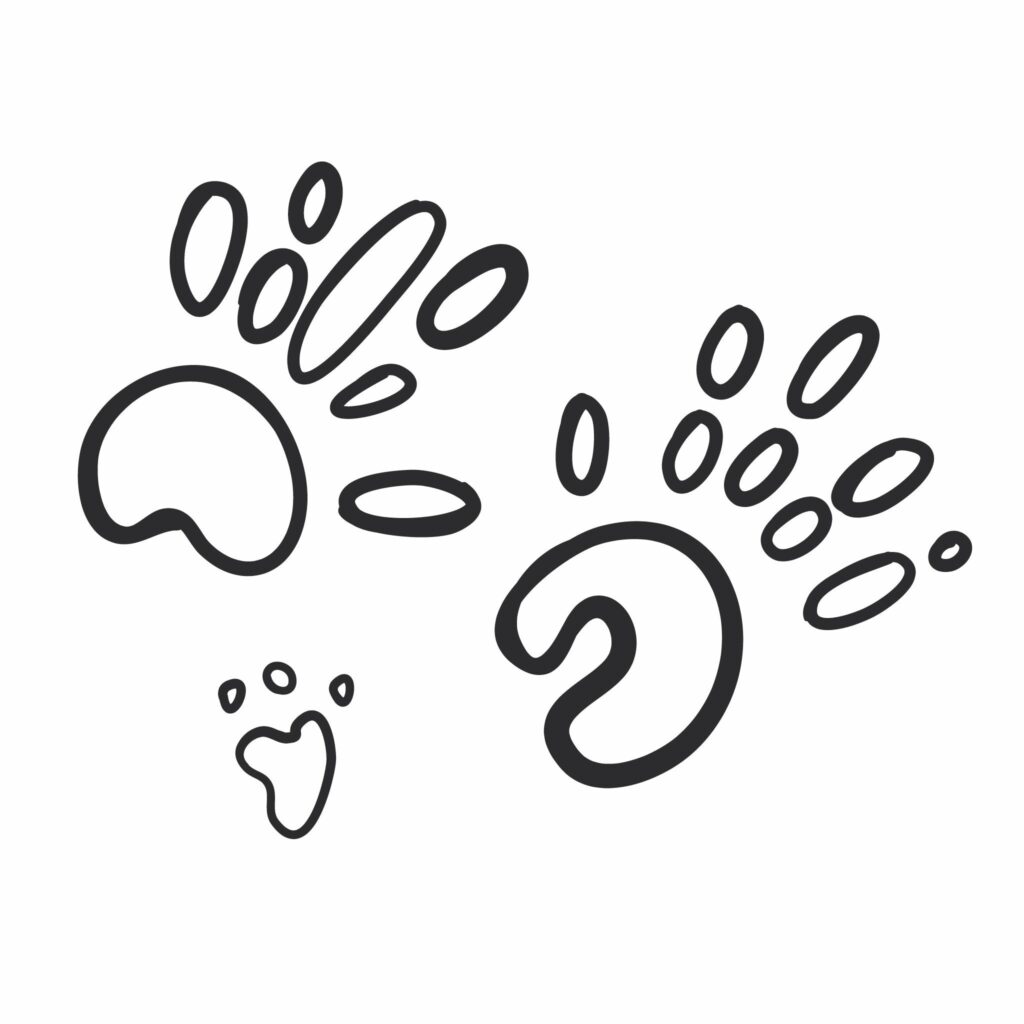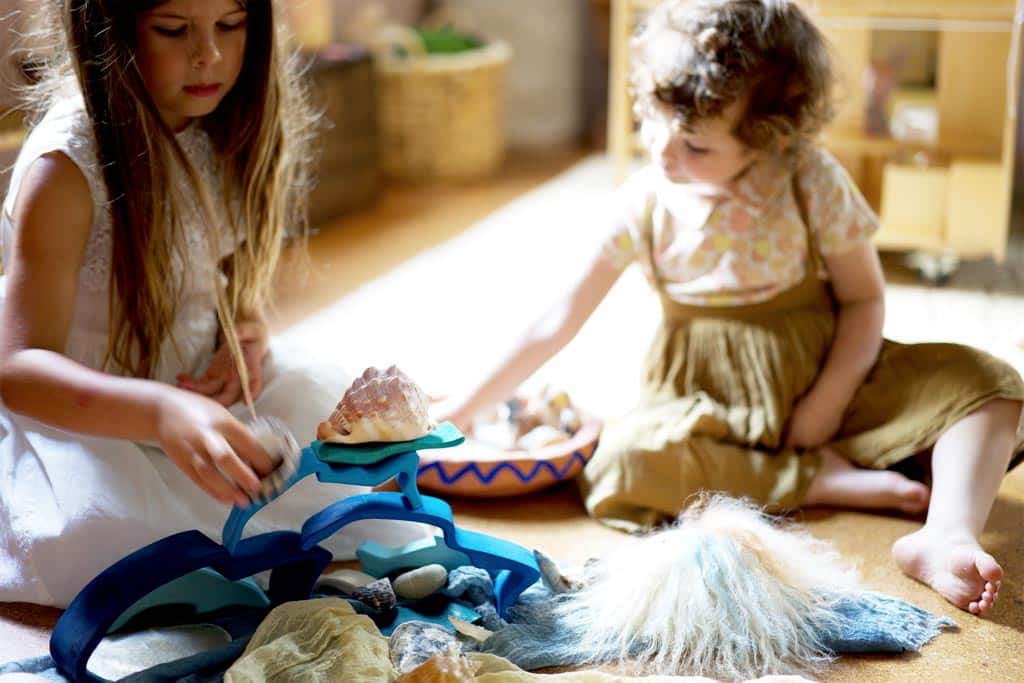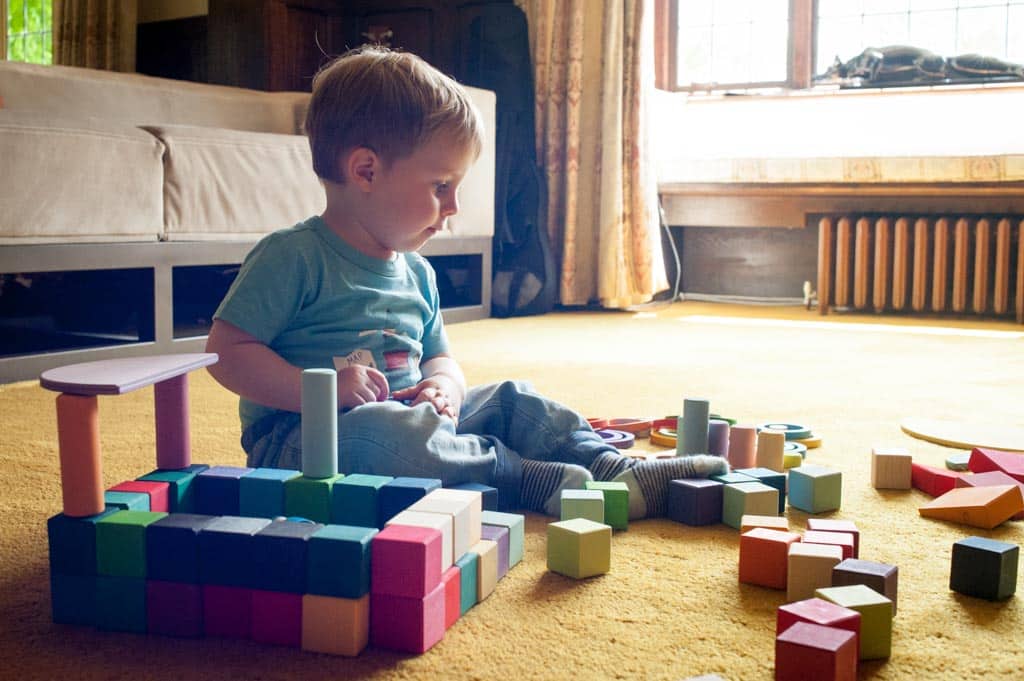Symbolic play is the highest form of play. Your child has learnt to play with ideas rather than physical objects.
But how did she get there?
In a previous post we saw that it all starts with imitative play. We saw imitation is a skill that children have to learn. It’s not something they are born with. But you can help by being an attentive companion.
Sometime after her first birthday, your infant picks up an empty beaker and puts it to her lips. Her head goes back and she takes an invisible gulp.
Is this deferred imitation? Is she copying something she saw previously?
No, she’s more sophisticated than that. She is engaging in an early form of symbolic play. She knows that cups are for drinking from and she is playing a game. The cup represents the imaginary drink.

A few weeks later you notice that she is taking an empty spoon and ‘feeding’ the stuffed toy that she keeps with her on her highchair at mealtimes. And she lifts that empty beaker to your lips. Drink!, she urges you with her eyes, even though she doesn’t yet have the words.
Up until this point she has been using objects for their intended purpose. A spoon to eat with, a cup to drink from.
But now her play is becoming imaginative.
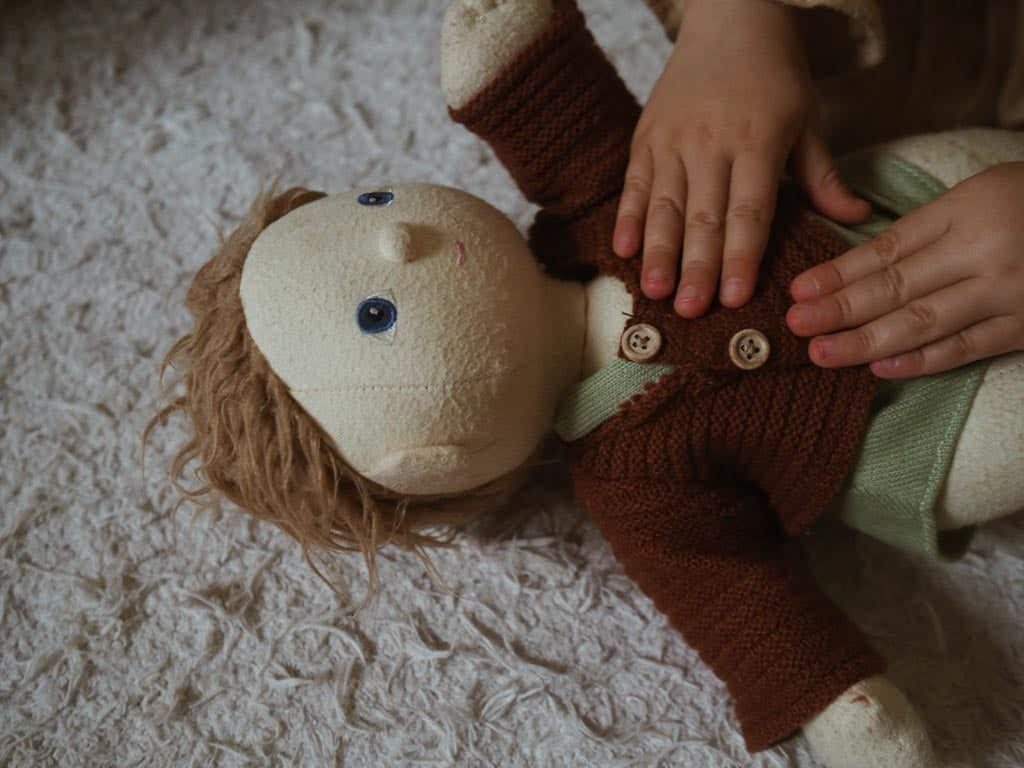
Around 2 years of age, she knits together several symbolic actions into sequences. A stuffed toy is fed, bathed and then tucked up in bed.
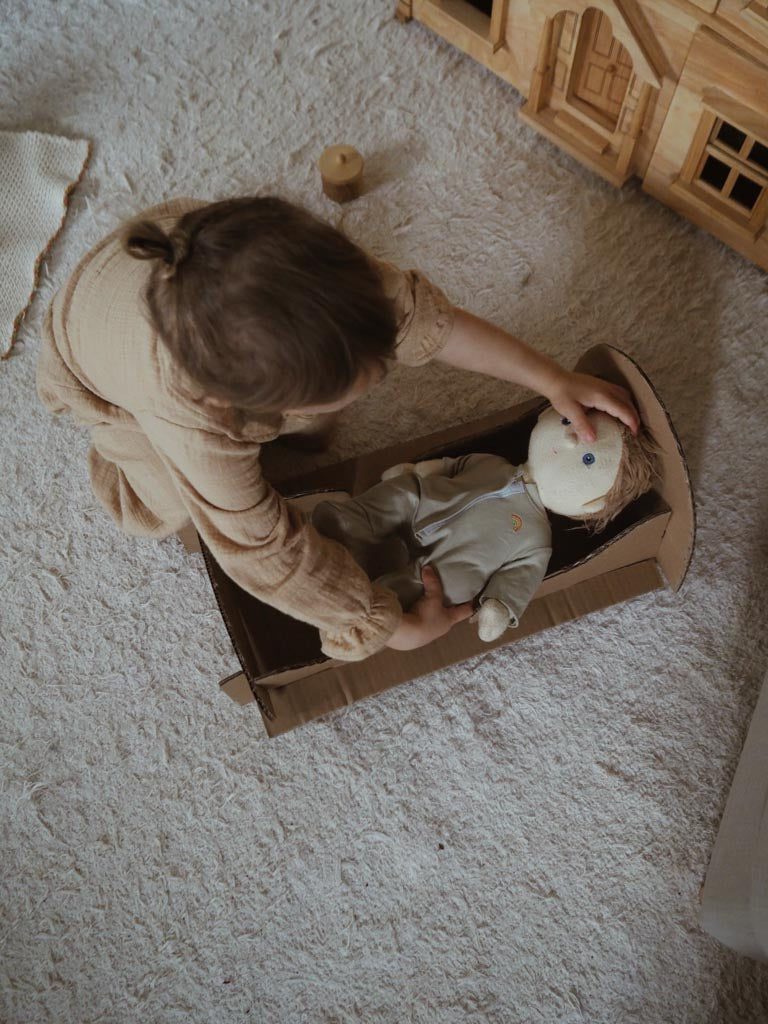
Toddlers like to eat pretend food using a real spoon, or to feed their toys. The props they use for their play have to be real or realistic. But as children get older, they start to use objects that bear little resemblance to the thing they’re trying to represent. A block becomes a mobile phone or the king’s treasure. It is now a symbol.
By the time children reach preschool, they are happy to give toys voices of their own and create worlds for them. By four or five, they’ll start to role-play, to take on imaginary personas. They, themselves, have become the symbol.
Symbolic play and language
Of course, all this wonderful play is a worthwhile end in itself. But it also leads somewhere special – reading and writing.
Words are symbols. They stand in for the real thing. So when I say ‘car’, I’m using the word as a label. I’m not presenting you with the actual object. This is abstract thought, and it’s key to language development.
This is also true for the written word. The letters m-a-n don’t resemble a person in the way that a pictogram or heiroglyph would. But anyone who can read instantly knows what they mean.
To get the idea that one thing can stand in for another your child must play. Open-ended, challenging materials are perfect. The plainer the better. Simple blocks, fabric, and string; cotton reels, cardboard boxes and tins.
What does this mean for my child’s play?
Give your child plenty of time and space to use her imagination. That means no background noise, no interruptions. Turn off the television, turn the dinner down and give her an extra few minutes to continue her activity.
You don’t need toys. Remember in yesterday’s emails I shared with you that my two-year-old daughter imagined conversations between toothbrushes and eggs.
So much of early learning is about offering an interesting environment (a cupboard full of groceries will do just fine) and having an interested adult nearby to scaffold her learning if needed.
Symbolic play comes naturally, but you can help it along if you take a step back and let your child get on with it.


